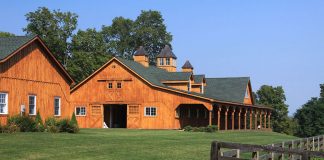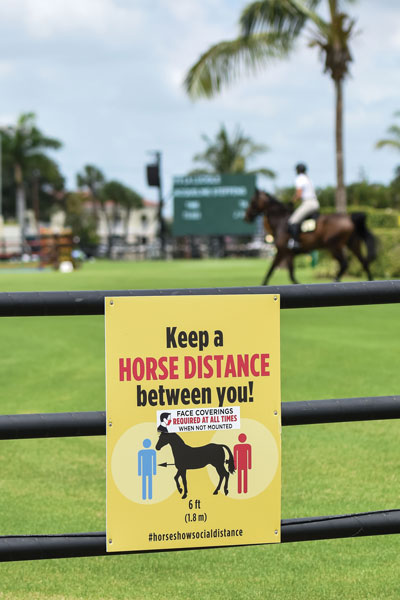
January 2020 showed promise as an eventful year for equestrians worldwide. It was to be an Olympic year, with many excited to visit Tokyo for the Summer Olympic Games, and the FEI World Cup Show Jumping and Dressage Finals were coming back to Las Vegas in April. The International Equestrian Federation (Fédération Equestre Internationale, FEI) and national equestrian federations around the globe were working on the final plans for these and other international competitions. Then, suddenly news agencies started reporting from Asia about a new coronavirus in humans, yet it seemed so far away to most in the horse industry. Shortly thereafter, COVID-19 cropped up on U.S. soil and rapidly spread across the continent and around the world, poised to affect all parts of life, including the horse industry.
Horse Industry Impact of COVID-19
While it’s too soon to have a complete handle on the impact of COVID-19 (the disease caused by the new coronavirus) on the horse industry, the simple answer is that it’s unprecedented. With the shutdowns of shows, racetracks, horse campgrounds and public stables, a broad spectrum of industry jobs were laid off or furloughed. Riding schools, trail barns and guest ranches were left caring for horses without any income to cover costs.
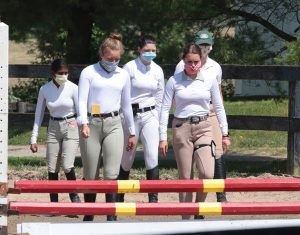
Beyond the obvious effects on instructor and trainer jobs, peripheral workers such as show managers and staff, professional braiders, equestrian media and photographers, and vendors of golf carts, feed, bedding and food at shows had nowhere to work.
According to a representative of the United States Equestrian Federation (USEF), the national governing body for horse sports in the U.S., as of mid-May, 30 percent of all events originally scheduled on their 2020 show calendar had been cancelled.
On June 1, the USEF officially opened their sanctioned shows and clinics again where local and state governments allowed.
“While some USEF functions have decreased during the pandemic, other areas are experiencing increases in operations,” says Carly Weilminster, USEF director of public relations and communications. “We are assisting organizers in rescheduling their competitions, processing rule modifications and timeline extensions, regularly updating the USEF COVID-19 Licensed Competition Action Plan, and hosting a variety of webinars to ensure [our members] are receiving new updates and information as available.”
Even before the USEF resumed their competition year, the National Reining Horse Association (NRHA) lifted their ban on shows on May 1 where allowed by governmental mandates. According to Lindsay Humphrey, NRHA public relations and communications manager, there were three approved shows in May.
“There was excitement in the air from our members about getting back into the show pen,” says Humphrey. “According to management, entries were up significantly from last year at the [May] show in Arizona.”
The FEI, the international governing body for equestrian sport, estimated in mid-May that their organization alone would lose around $7.6 million due from uncollected fees and subscriptions, but added that because of long-term risk management planning, their overall position was solid. Many equine industry businesses and organizations do not have the luxury of that type of coverage, however.
COVID-19 Horse Industry Survey Says
The American Horse Council (AHC), a trade organization in Washington, D.C., representing the horse industry, circulated a COVID-19 impact survey beginning in March 2020 “to better understand how the equine industry has been affected by the pandemic and what possible downstream implications may result.”
As of June 5, 105 survey responses had been received representing 974 horses and 33 states. The data is very preliminary as of press time, but still shows cause for concern. The AHC reissued the survey in mid-June (after press time) and encourages additional participation by going to their website or Facebook page.
Julie M. Broadway, president of the AHC, explains the survey figures received so far.
“The net change in income/expenses in one month (March 2020) was $951 per horse represented,” she says. “If we model this on a national level (7.2 million horses in the U.S.), that would equate to $6.8 billion in losses for one month.”
Broadway cautions that this is a small sample population from which to make these types of projections. She states that a common theme among open responses was increased financial hardship and worry about long-term socioeconomic impacts on the industry.
Front Line Equestrian

Nancy Bryant, a United States Dressage Federation bronze and silver medalist and registered nurse from Oxford, Mich., is not only dealing with the disappointment of cancelled shows and separation from her horse during the pandemic, but also the stress and risk of a job on the front lines in health care.
She works at a small community hospital, which is part of a bigger system in Detroit where the virus hit especially hard. Since the earliest days of the pandemic, she has been caring for COVID-19 patients. Even with extreme safety protocols in place, Bryant eventually contracted the virus. “On April 19, I [tested positive], most likely from work exposure since I followed my governor’s directives of self-quarantining, only going to work and home.”
The virus led to two hospitalizations for Bryant.
“My first hospitalization was due to an excessive headache and temperature, which are two significant COVID-19 symptoms,” she says. “I was discharged four days later to go home and to continue to self-isolate. Unfortunately, respiratory difficulty caused me to return to the emergency center four days later for an additional stay.”
The recovery was difficult for Bryant.
“I’m normally an active person, but with the virus I was suddenly short of breath after doing things like washing dishes or vacuuming,” she explains. “I needed a nap after simply taking out the trash or showering. That was when the seriousness of the illness hit home. I couldn’t even stand for 10 minutes without my muscles shaking from fatigue. I was off work a total of six weeks, but as a frontline worker, I at least had a job to go back to.”
Bryant reports that her barn in Michigan was closed to boarders on March 16 and didn’t fully re-open until June 1. Even then, social distancing and wearing masks were deemed mandatory by the barn owner. The horses at her barn were all given an eight-week layoff, but Bryant says at some other barns in Michigan, trainers and staff kept horses exercised while owners were shut out.
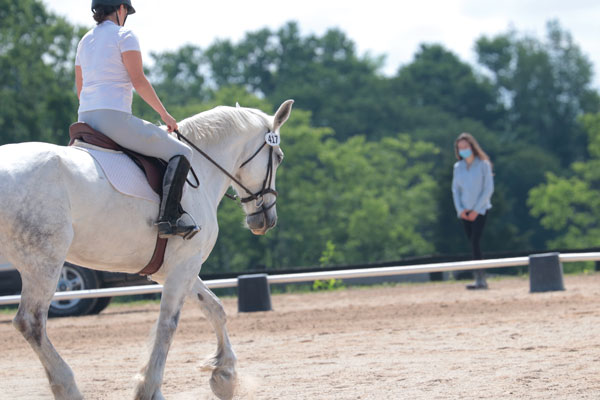
Back to Business
Experts predict that it won’t be business as usual for at least the rest of this year and probably longer, but a return to the show ring and the trails in any form is to be celebrated. Two representatives of the USEF offer their thoughts on how critical it is that a return to showing is done in the right way.
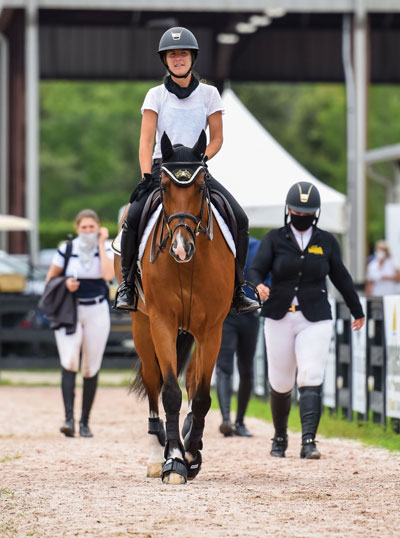
“As we reopen, our goal is to continue moving forward through this process,” states USEF CEO Bill Moroney. “Everyone needs to join together to make sure we are all doing our part. Complete commitment is essential to the future operations of our sport.”
Mark Hart, M.D., a practicing cardiologist and the U.S. Equestrian Team’s physician and chair of the FEI’s Medical Committee, emphasizes the need for everyone to take the pandemic seriously and to abide by the new rules.
“Our own individual actions to contain the spread of COVID-19 will have a significant impact on the overall societal outcome,” says Hart. “I can’t emphasize this enough.”
Equestrians should do their homework before venturing out to any show, clinic or trail ride to make sure that the event is still scheduled and that facilities are open. Anyone participating in any equestrian activity should expect to have their temperature monitored, to be asked to wear a mask when not riding and to continue to practice social distancing.
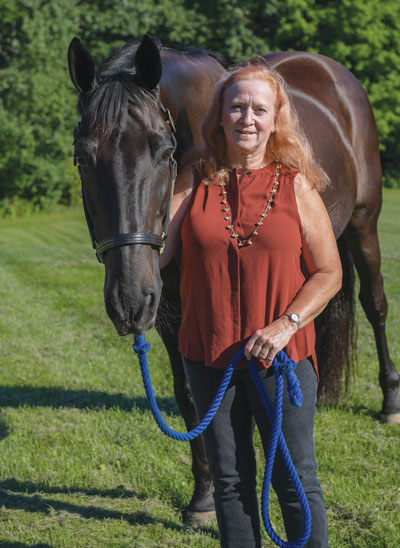
Hand sanitizer and/or a portable handwashing station, as well as cleaners and disinfectants, masks and plastic gloves should all be added to the packing list. Worldwide, virtually all equestrian organizations and show management businesses have posted useful information on their websites and social media to help prepare for a return to competition. Trainers stress that you should bring your horse back into full work using a careful conditioning program well ahead of hitting the show ring or trails.
Bryant shares advice from a nurse’s perspective.
“I suggest everyone be tested for active COVID-19,” she says. “If you come back positive, then you know you’re a carrier and can shed the virus, unknowingly exposing others, until you test negative. Don’t ignore the many potential signs and symptoms.”
If you’re showing your horse, Bryant has some advice. “I recommend you have your own tack stall, maintain safe distancing and wear a mask when in groups. And remember to wash, wash, wash your hands!”
This article about COVID-19’s impact on the horse industry appeared in the August 2020 issue of Horse Illustrated magazine. Click here to subscribe!




